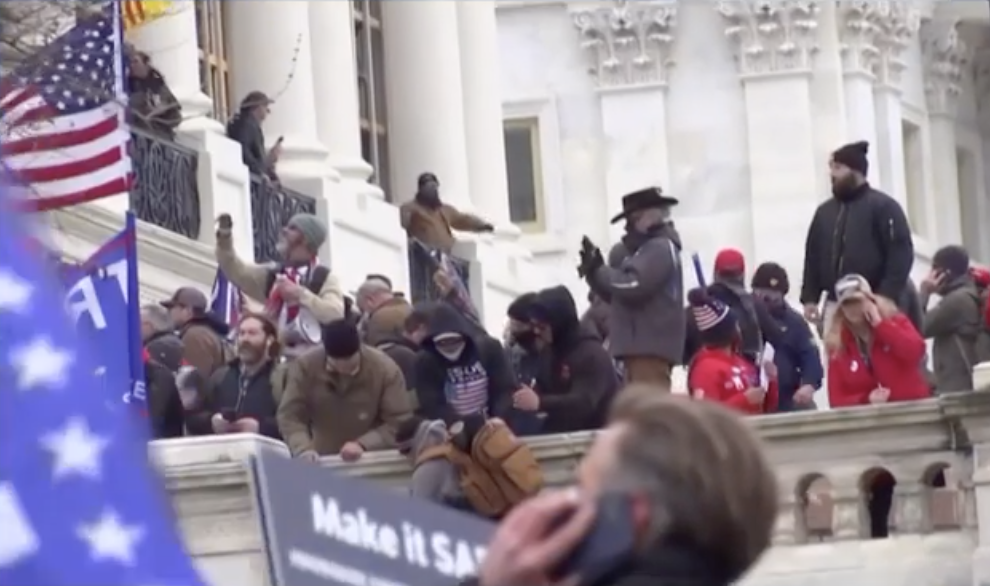The termination of a health provision implemented during the pandemic, known as Title 42, has sparked significant changes in US immigration policy, leading to an influx of migrants near the US-Mexico border. Title 42, which was introduced during the COVID-19 outbreak, enabled border officials to promptly deny entry to migrants, effectively curbing the virus's spread. However, with the public health emergency declaration now over, this rule no longer applies.
Title 8, a longstanding section of US law, is now back in force. This rule, which Homeland Security Secretary Alejandro Mayorkas has noted would impose "more severe" penalties for unlawful entry, replaces the now-expired Title 42. Migrants who attempt multiple illegal crossings under Title 8 may face criminal charges, a stark contrast to the repealed Title 42 that bore no legal ramifications. Furthermore, Title 8 permits migrants to seek asylum, though the process involves a rigorous credible-fear screening followed by progression through the immigration court system.
Despite the reinstatement of Title 8, processing times may still be a challenge. Where Title 42 allowed for speedy expulsions averaging 30 minutes, Title 8's processing time can extend beyond an hour.
The US government also has new, stringent measures in place following the revocation of Title 42. A new asylum rule presumes migrants ineligible for asylum if they didn't first seek refuge in a transit country, such as Mexico. However, exceptions will be made for migrants who secure an appointment through the CBP One app. Ineligible migrants may face "expedited removal," barring them from the US for five years.
In addition to this, the administration plans to deport Cubans, Venezuelans, Haitians, and Nicaraguans to Mexico if they cross the border illegally. Officials emphasize that these measures are designed to promote legal immigration pathways, which include parole programs for eligible nationals and the CBP One app for appointment scheduling at entry ports.
Furthermore, the State Department is planning to launch around 100 regional processing centers in the Western hemisphere, allowing migrants to apply to enter the US legally. The timeframe for these centers' establishment, however, remains uncertain.
In an attempt to dissuade illegal border crossings, the US is implementing new measures at its southern border. This comes with the discontinuation of Title 42, which has facilitated swift repatriation of migrants at the US-Mexico border over the past three years.
Title 42, a legacy of the Trump era, was enacted in March 2020. Its main purpose was to prevent the spread of COVID-19 by denying entry to migrants who arrived at the border. Prior to this, migrants could enter the US, seek asylum, and wait for their immigration cases to be processed while inside the country. With Title 42 in place, migrants were sent back across the border and denied the opportunity to claim asylum.
In the wake of Title 42's termination, the Biden administration has implemented several new policies aimed at curbing illegal crossings. Migrants apprehended while attempting to cross the border illegally will now face a five-year ban, and repeat offenders could be criminally prosecuted.
A new policy has now been introduced to address the overcrowding issue. As per this policy, all migrants must be processed within 12 hours of their arrival. If the processing time exceeds 12 hours, an explanation needs to be provided to the senior officials. This new mandate will encourage more efficient handling of the migrants while reducing the pressure on the border patrol stations.
The CBP One app is a new tool introduced by the U.S. government to streamline the asylum process. Migrants can use this app to apply for asylum, and if their applications are approved, they can legally enter the U.S. The number of people allowed to apply through the app is being increased from 740 to 1,000 per day.
The app is seen as a critical part of the government's strategy to manage migration flows. It offers an accessible and secure platform for migrants to make their asylum applications, reducing the need for hazardous attempts to cross the border illegally.
Title 42 was a public health provision that allowed the U.S. to rapidly expel migrants during the COVID-19 pandemic. As the pandemic emergency has ended, this provision has lapsed. However, the U.S. government is replacing it with stricter regulations, aimed at encouraging migrants to use legal channels to enter the country.
Title 42's expiration doesn't mean it can't be invoked in the future. If another public health emergency arises, this provision could be reinstated. But for now, the focus is on implementing the new policies and managing the transition.
WHAT'S HAPPENING TO ASYLUM SEEKERS WHO DIDN'T APPLY IN TRANSIT COUNTRIES? The U.S. is now implementing a policy that denies asylum to those who didn't seek protection in the countries they passed through on their way to the U.S. This rule primarily affects migrants from Central America who traverse Mexico to reach the U.S. border.
However, this policy may face legal challenges, as it bears resemblance to a similar rule from the previous administration that was overturned by the courts. It remains to be seen how this policy will play out in the legal system.
The end of the COVID-19-era health provision, Title 42, has brought significant changes to U.S. immigration policy. The U.S. government is now implementing a series of strict regulations designed to deter illegal border crossings and encourage migrants to use legal pathways to enter the country.
The CBP One app, increased consequences for illegal crossings, expedited processing times, and new asylum rules are all part of this comprehensive strategy. As this transition period unfolds, the focus is on managing the large influx of migrants, ensuring the efficient operation of border patrol stations, and upholding the principles of U.S. and international law.
Meta Title: "Navigating New Norms: A Comprehensive Guide to the U.S. Immigration Policy Shift" Meta Description: "Uncover the transformative changes in U.S. immigration policy following the end of the pandemic-era restriction, Title 42. Explore the new strategies designed to manage migration, including the CBP One app, expedited processing, and stricter rules for asylum seekers." Meta Tags: "U.S. immigration policy, Title 42, border policy changes, asylum rules, CBP One app, illegal border crossings"
Q&A Section:
Q: What changes have been made to the U.S. immigration policy following the end of Title 42? A: The U.S. government has implemented a series of strict regulations designed to deter illegal border crossings and encourage migrants to use legal pathways to enter the country. These changes include the introduction of the CBP One app for asylum applications, increased consequences for illegal crossings, expedited processing times for migrants at the border, and a new policy denying asylum to those who didn't seek protection in the countries they passed through on their way to the U.S.
Q: What is the CBP One app? A: The CBP One app is a tool introduced by the U.S. government to streamline the asylum process. Migrants can use this app to apply for asylum, and if their applications are approved, they can legally enter the U.S. The number of people allowed to apply through the app is being increased from 740 to 1,000 per day.
Q: What will happen to Title 42? A: Title 42 was a public health provision that allowed the U.S. to rapidly expel migrants during the COVID-19 pandemic. With the end of the pandemic, this provision has lapsed. However, if another public health emergency arises, this provision could be reinstated.
Q: What's the new policy on asylum seekers who didn't apply in transit countries? A: The U.S. is implementing a policy that denies asylum to those who didn't seek protection in the countries they passed through on their way to the U.S. This rule primarily affects migrants from Central America who traverse Mexico to reach the U.S. border. However, this policy may face legal challenges, as it bears resemblance to a similar rule from the previous administration that was overturned by the courts.
Overall, these new changes represent a significant shift in U.S. immigration policy. It's a comprehensive strategy designed to manage the large influx of migrants, ensure the efficient operation of border patrol stations, and uphold the principles of U.S. and international law. As this transition unfolds, the impact of these changes on the migrant situation at the border will be closely watched.










